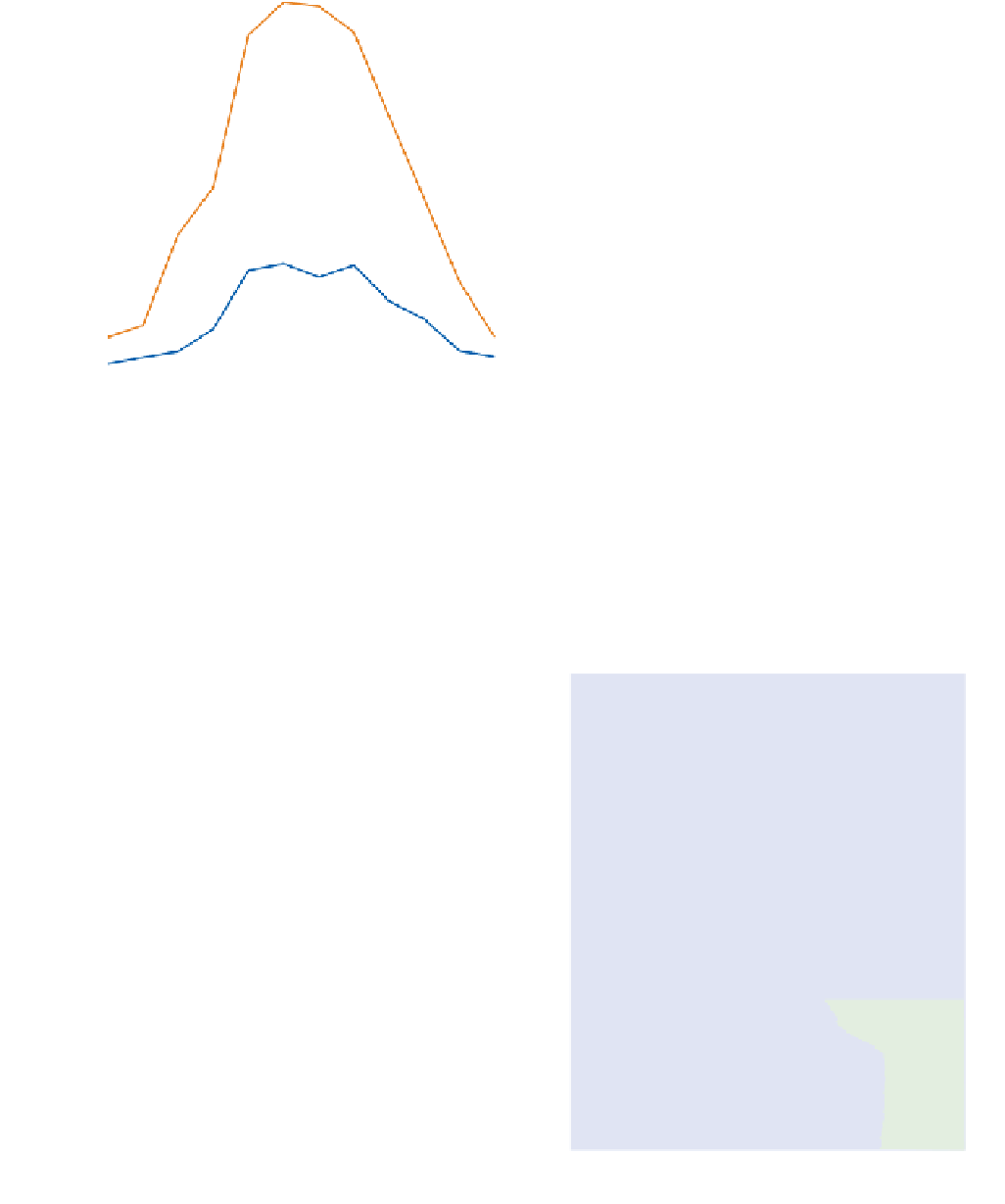Geoscience Reference
In-Depth Information
Amarillo (Texas)
(35°N)
Cornwall (England)
(50°N)
250
140
120
200
PE
100
PE
150
80
60
100
Precipitation
Precipitation
40
50
20
0
0
JFMAMJJASOND
JFMAMJJASOND
Month
Month
Figure 5.18
Mean monthly precipitation in comparison with mean monthly PE at Amarillo (Texas) 35°N and Cornwall (UK) 50°N.
precipitation. In Cornwall only in May-July is this found.
does not occur and water loss is entirely by evaporation.
The main factors determining water loss are therefore the
atmospheric conditions, and there is generally a close
relationship between AE and PE.
Nevertheless, the relationship is not perfect, and the
main reason is that the water is able to absorb a large
amount of energy which is not used in evaporation. This
energy is expended in heating the water, and much of it
is recirculated through the water body.
Evaporation is greatest when the sea is warm in
comparison with the air, such as above the Gulf Stream
in the Atlantic Ocean. In general this is the case, as air
temperatures are slightly below those of the sea over much
of the globe for much of the time. Where upwelling of cold
water from depth occurs, however, the surface tempera-
tures are greatly reduced and the difference between sea
and air temperatures becomes small; in some cases the sea
may even be cooler than the atmosphere. An example of
this phenomenon occurs off the coast of Peru, where
the cold Humboldt current brings bottom waters to the
surface. As a result, the air is warm relative to the sea, it
retains moisture, and so the humidity gradient above the
surface is low. This greatly reduces the rate of evaporation,
and, as
Figure 5.19
shows, the effect continues some way
out into the Pacific.
6
4
4
5
5
5
5
4
Atlantic
Ocean
4
5
5
5
5
5
5
20°N
5
4
4
4
3
3
3
3
3
4
4
2
3
Cold
water
0°
2
2
3
4
1
4
20°S
Pacific
Ocean
1
3
2
100°W
80°W
60°W
Figure 5.19
Mean evaporation in millimetres per day from
the tropical Atlantic and eastern Pacific Oceans.
Source: After Hastenrath and Lamb (1978)




















































































































































































